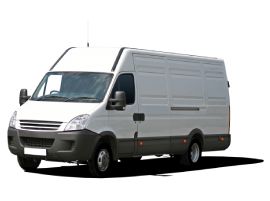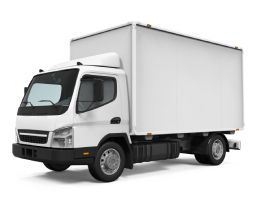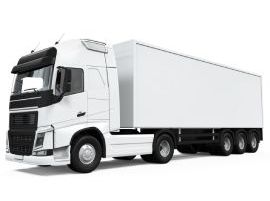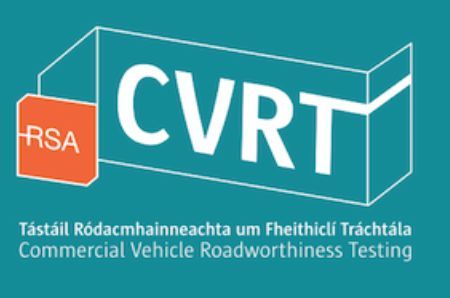Vehicle standards for heavy commercial vehicles (HCVs)
Types of HCVs and your obligations to maintain safety standards as a HCV operator.
This content is for general information only. It does not, and is not intended to, provide legal or technical advice or to represent a legal interpretation of the matters it addresses.
A heavy commercial vehicle (HCV) is a commercial vehicle with a design gross vehicle weight (DGVW) above 3,500 kg.
Types of HCVs include:

Large vans

Rigid trucks

Articulated trucks
Vehicle maintenance and repair
As the owner or operator of a commercial vehicle it's very important to always keep your HCV in a roadworthy condition.
All HCV owners or operators must ensure their vehicles are roadworthy.
They must:
- Have regular and good quality preventative maintenance systems in place
- Conduct daily walkaround checks
- Swiftly repair defects
- Ensure their vehicles are tested on time
- Complete an annual self-declaration with the Road Safety Authority.
Aside from the road safety benefits and it being your legal obligation, well maintained vehicles reduce the likelihood of your vehicle encountering delays from unscheduled downtime, unsafe vehicles being impounded and additional delays at roadside inspections.
You can find out more on the CVRT vehicle maintenance and repairs website.

Find out more about the important role Commercial Vehicle Roadworthiness Testing plays in keeping you and other road users safe, and how and where to book a CVR test.
Check the vehicle history
If you are buying a HCV privately, it’s a good idea to get a vehicle history check beforehand to ensure that the vehicle has not been seriously damaged in a previous collision.
There are a number of companies who will check the history of a HCV for you. All of them charge a fee, but the peace of mind you get will make it well worthwhile.
A pre-purchase inspection of a used HCV by a qualified mechanic will give you a good sense of the vehicle’s overall condition and some idea of any work needed in future.
Driving for work
Driving for work involves a risk not only for the driver, but also for fellow workers and members of the public, such as pedestrians and other road users. Our Driving For Work website offers advice on helping make driving for work safer for everyone. You can also find more information from CVRT on how the proper maintenance of your vehicle and regular walkaround checks makes driving for work safer.
Walkaround checks
Our HCV driver walkaround checks video highlights the importance and benefits of daily walkaround checks and your obligations as a HCV driver. Further information on this can be viewed on our Daily Walkaround Checks webpage
Frequently asked questions
The following vehicle types must be fitted with appropriate spray suppression devices or systems under S.I. No. 272 of 2011 of Road Traffic Spray Suppression Regulations 2011.
- Goods vehicles with a design gross vehicle weight (DGVW) exceeding 7.5 tonne registered on or after 01 September 2011.
- Goods trailers or semi-trailers exceeding 3.5 tonne maximum permissible mass and first licensed on or after 01 September 2011.
Spray suppression devices are not practical on certain vehicles due to their design and purpose. Exemptions from this requirement are also included in the above regulation. Where fitted the requirements and specifications for the spray suppression devices or systems are checked at the vehicle’s annual roadworthiness test.
Commercial axles must be capable of achieving a brake efficiency of at least 50% of the design axle weight (DAW). High speed commercial axles are generally designed to a speed rating of 100 km/h.
Non-commercial or agricultural axles are generally designed to achieving a brake efficiency of 25% of DAW and a speed rating of less than 40 km/h. For information on agricultural axles see our Download and read our Revised Standards for Agricultural Vehicles
You will need to contact the roads section of your local authority. For further information see our FAQs on Abnormal Loading and Loading and Load Security.
It is the maximum weight that may be imposed on the trailer king pin as specified by the trailer manufacturer. The maximum fifth wheel weight borne by the drawing vehicle depends on the design weights, number of axles of the towing vehicle and the distance measured from kingpin to centre of rearmost axle of the trailer.
You will need to check the pay load and towing capacity of your vehicle with the vehicle manufacturer or authorised distributor.
The maximum height is 4.65 m including load being carried. This does not apply to vehicles or combinations of vehicles and trailers transporting agricultural produce e.g., hay, straw, or other baled animal fodder. See our Weights and Dimensions leaflet for more information.
The maximum legal speed limit for a HCV drawing a trailer is 90 km/h on a motorway and 80 km/h on all other roads. If a lower speed limit sign is posted this must be obeyed at all times. The additional weight of a load on a trailer and weather conditions must be considered when towing any trailer. See Rules of the Road (English)
S.I. No. 5 of 2003 as amended sets out the requirements below for load overhang being carried on all vehicles. Anything that projects out further than this could be interpreted as being an inessential projection which is illegal.
Rear Overhang
A load, other than poles intended for use in connection with telephone or electricity services, on a vehicle which is not drawing a trailer, or on the trailer of a combination of vehicles, shall not project more than 3 metres to the rear beyond the rearmost point of such vehicle or trailer.
Warning Device
(1) In this Regulation a warning device means either a red flag or cloth at least 300 millimetres square, or a rigid device having a surface of a similar area coloured red or in two colours, one of which is red and the other is lighter than red.
(2) Where a load projects more than one metre to the rear beyond the rearmost point of a vehicle or trailer, a warning device shall be carried at the rear of the load during the daytime. However, at night-time, overhanging loads must be fitted with a red reflector and a red light .
You can also view our Maximum Weights and Dimensions webpage.
Off-road dumpers are primarily used on construction sites as opposed to public roads. As certain design aspects of off-road dumpers do not comply with the requirements of 1963 Road Traffic Construction, Equipment, and Use of Vehicles regulations they may not legally use public roads except under a permit granted by the appropriate local authority. Once granted for a specific period of time, the permit allows the use of the vehicle on the public road. For further information contact your local authority.
No. Provided the lorry has a sufficient towing capacity to tow such a combination or load and the towing trailer is designed for the purpose of towing another trailer. The overall length of a combination of vehicles or of a large tractor drawing two trailers shall not exceed 18.75 metres. All vehicles in use on Irish roads are subject to the following regulation.
S.I. No. 5 of 2003 - Road Traffic Construction and Use of Vehicles Regulations*
* Note that this regulation is in original format, but amendments can be viewed at
For further guidance see our Weights and Dimensions webpage.
Yes, providing the device you are proposing does not distract the driver’s attention or interferes with any of the vehicle’s systems. Note that you should be aware that ‘(a) obstruction, objects or stickers within driver’s field of view that materially affects driver’s view in front or to the sides (outside cleaning area of windscreen wipers)’ is a failure item in CVRT Manual. Enforcement of these regulations is a matter for An Garda Síochána.
In relation to data protection of the public, see Data Protection Commissioner website for guidance for drivers on use of dash cams or email them at [email protected]
Yes. Unless these vehicles are not built on a category N chassis i.e., it has a dedicated chassis.
For normal use, they are not a legal requirement. However they may be required for use on construction sites. For further information see Health and Safety Authority document ‘Workplace Transport Safety Reversing Vehicles’.
Related pages
Vehicle standards for heavy commercial vehicles (HCV) in Ireland. Safety checks, walkaround checks, certificate of roadworthiness (CRW), maintenance and repair.
Information and regulations for important vehicle components including lights, seat belts, glass and tyres.
Vehicle standards for converted or modified vehicles. Down-rating and up-rating of modified vehicles. Converting M1 and N1 vehicles. Reclassification rules.
Road traffic legislation for vehicles in use on Irish roads. Type approval legislation for new vehicles. Irish and EU safety and environmental standards.